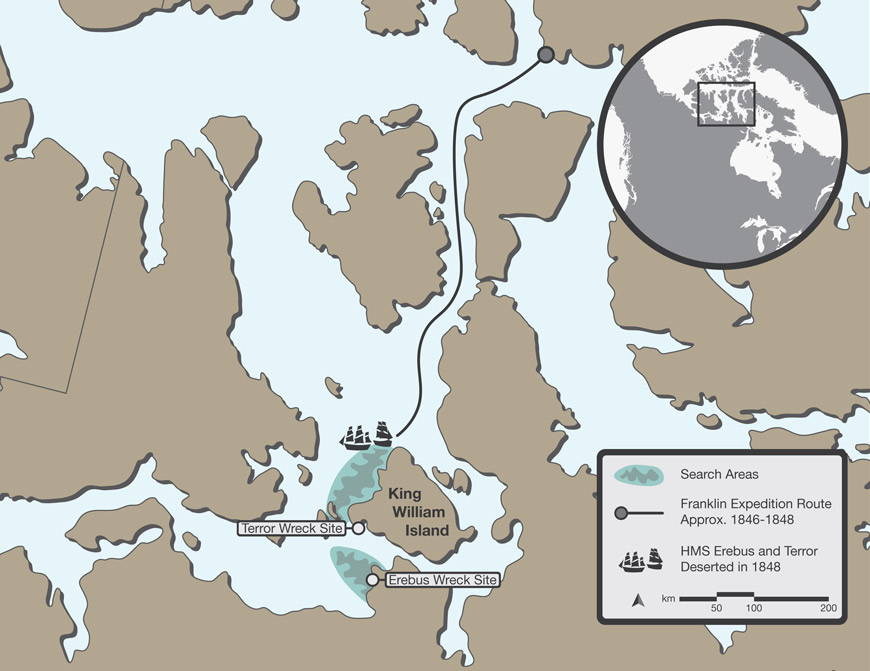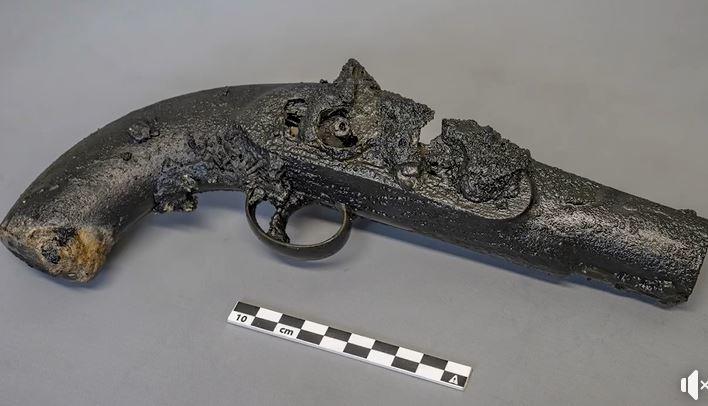Like the interior of Africa and finding the source of the Nile, Great Britain was using some its imperial wealth to explore the unknown and a veteran skipper like Franklin wanted to be first to make the breakthrough across the north pole.
Their ships were state-of-the-art; interior heating and storage enough preserved food to last the 100-plus men for months at a time plus chicken, pigs, and even for the early parts.
It was not to be. Whalers in Baffin Bay spotted them on 1846 but they were never seen by outsiders again. A note that a shore party left said they had been trapped in ice since September of 2046.
That Point Victory note was the only evidence of where they had been trapped. it said Franklin died in June of 1847. The ships were said abandoned in 1848.
But where had they gone?
In 2008, Canada decided to find the wrecks. They narrowed the search to a northern zone, and a southern because Inuit said they had seen a ship. It was slow going. They found the wreck of a ship that had searched for the ships in the 1850s but only in 2014 did they find metal and wood on an island in Wilmot and Crampton Bay. A day later they used sonar closer to that shore and found a wreck which turned out to be the Erebus.

Credit: Parks Canada
After that, surveys began and now Parks Canada has announced the retrieval of coins, guns, medicine, and more.

Credit: Parks Canada
The artifacts will be cleaned up and held at the Nattilik Heritage Centre in Gjoa Haven. But don't be in a rush to go there. That's a hamlet in Nunavut, above the Arctic Circle.
What caused the wrecks? They were found 50 miles apart so it has long been fodder for historical fiction but it was ice. The ships departed in the spring and by September 1846 they were stuck. In 1848 the crew that abandon ship perished west of the Back River. Among the causes of death were scurvy, starvation - a less likely cause may have been lead poisoning due to the solder used for the tin cans that contained the preserved food they had lived on while waiting for the ice to thaw.




Comments